The absolute perfection of a fat-tire gravel race bike — the ENVE MOG
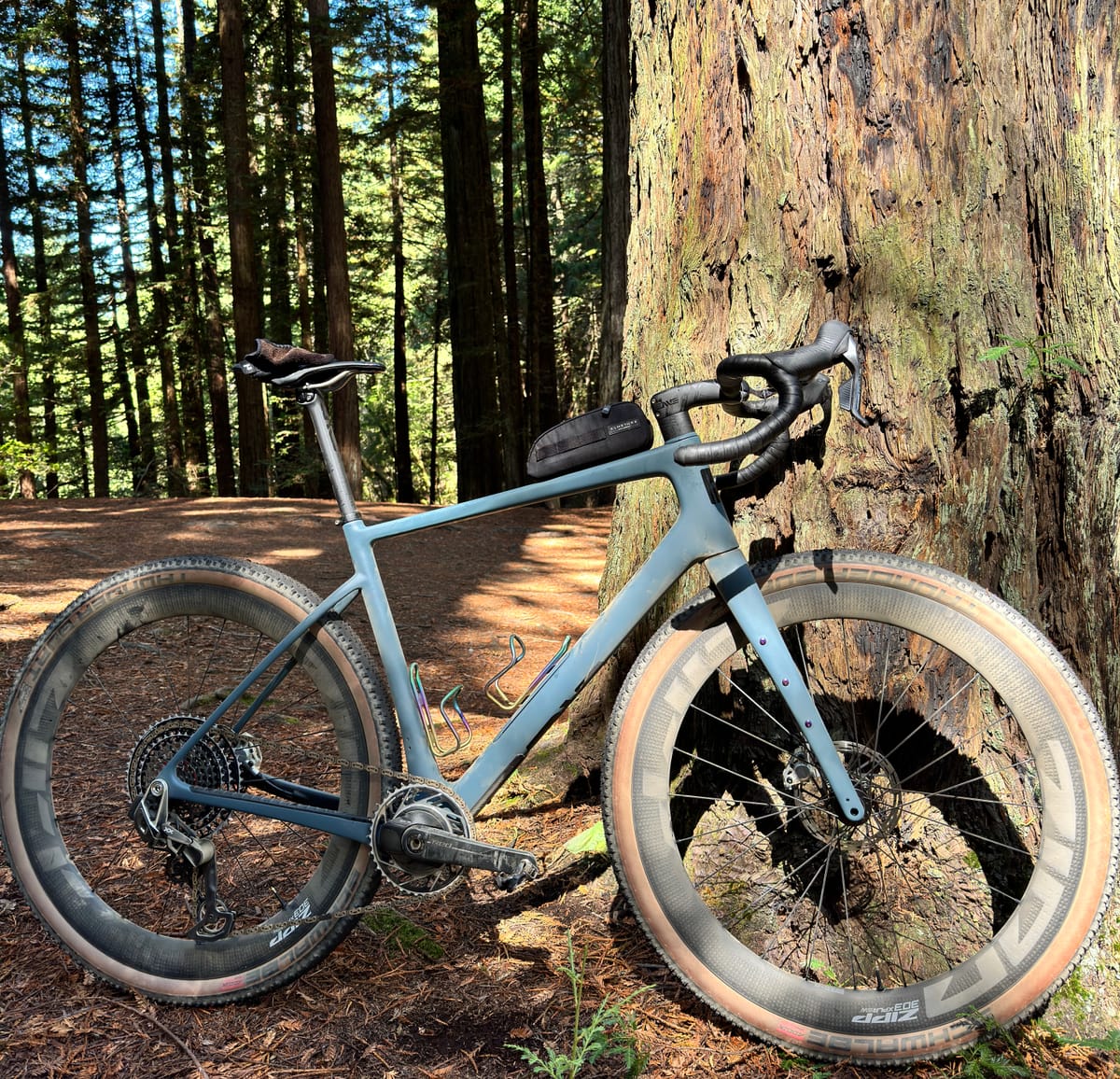
Bikes are fun and you can choose to do most rides on most terrain on most any bike if you want to. Take your road bike on some light gravel roads. Ride your enduro bike a few thousand feet up a mountain road to earn that sweet descent. Nobody is telling you what sort of bike to ride — ride what you love. There is a reason, however, that so many different types of bikes exist. All bikes are an exercise in compromise, essentially finding some balance on a spectrum of Power, Comfort, and Speed, on a given type of terrain for a given distance.
I’ve always wished bike reviews and bike product marketing were a bit more direct about those tradeoffs. A bike that is positively framed as being super stiff and responsive, is probably not comfortable for long distances. There are countless examples like this, but you get the idea. You need to be sort of deep in the weeds to really understand the essence of each bike that exists, especially if you can’t ride it first.
In Search of a Gravel Race Bike
I love riding all sorts of bikes, from road to downhill bike park and everything in between, but gravel riding is probably my favorite. Being able to shred on trails at a decent clip, for long distances (100 mile gravel races, etc.) while feeling fast and capable on the roads that might get mixed in, is my idea of a perfect day on the bike. I have absolutely loved my Ti gravel bike for the last handful of years, and plan on enjoying it for many more. Given the training I’ve been doing and the gravel events I’ve signed up for, however, has kept me looking for a true gravel race rig, and thankfully I’ve found it.
If you’ve followed gravel racing at all lately, you’ve likely come across folks like Dylan Johnson who spend a great deal of time and energy optimizing their bike setup and sharing what they’ve learned. This post is a great summary of what many modern pros consider the ultimate gravel race bike — lightweight carbon frame, aero wheels, mountain bike sized tires with fast thin casings, with a bike position that enables an aero position without sacrificing comfort. You can read about Alexey Vermeulen’s similar perspective here — “Bigger is better in gravel” on the Enve blog.
You can see the goal here is to find the optimal balance of Power, Comfort, and Speed, on “gravel” terrain, over long distances.
A quick word about “gravel” terrain
A few years ago a friend introduced me to the now historic unpaved roads in Loudoun County. If such a thing as “champagne gravel” exists, this place is French Grand Cru. It’s also incredibly flat. The spectrum of terrain one might consider “gravel” is almost as broad as all of cycling. On the other end of the spectrum you might find segments like the Dotta Descent around mile 85 at Lost and Found — a long, fairly rocky, fairly steep, fairly fast romp that feels abusive even on a mountain bike, as confirmed by many racers last year. (So rocky, I’ve just heard that Lost and Found is removing that segment from the race next year.)
In addition to the variety of terrain considered “gravel”, I also believe that the trails, fire roads, and similarly unpaved roads are getting rougher as climate change continues to unfold. Severe drought, heavy rains, and overworked trail crews and wild fire fighters leads most of our “gravel” routes to continue to get rougher as the months roll on. Railroad Grade is one of my favorite dirt routes up to the top of Mt. Tam here in Marin County, north of San Francisco, California. The first time I rode this route I was ushered up by friends riding road bikes with 23mm road tires. Last year, I broke a brand new rim on a full suspension mountain bike on this same trail. Gravel is getting rougher, racers are getting faster, and the bikes need to keep up!
An amateur’s review of the ENVE MOG — a modern gravel race machine
First, the build details:
- ENVE MOG, Size 58, Slate Blue
- Drivetrain: SRAM XPLR Red, 42T chainring with power meter, AXS Transmission (mullet) derailleur, 10-52 cassette
- Wheels: Zipp 303 XPLR SW
- Tires: Schwalbe Thunder Burt Super Race 29 x 2.1
- Touchpoints: ENVE aero stem (100mm), ENVE gravel bars (44), ENVE Selle Italia saddle, Shimano XTR pedals, Almsthre snack bags, Uswe Outlander Pro hydration
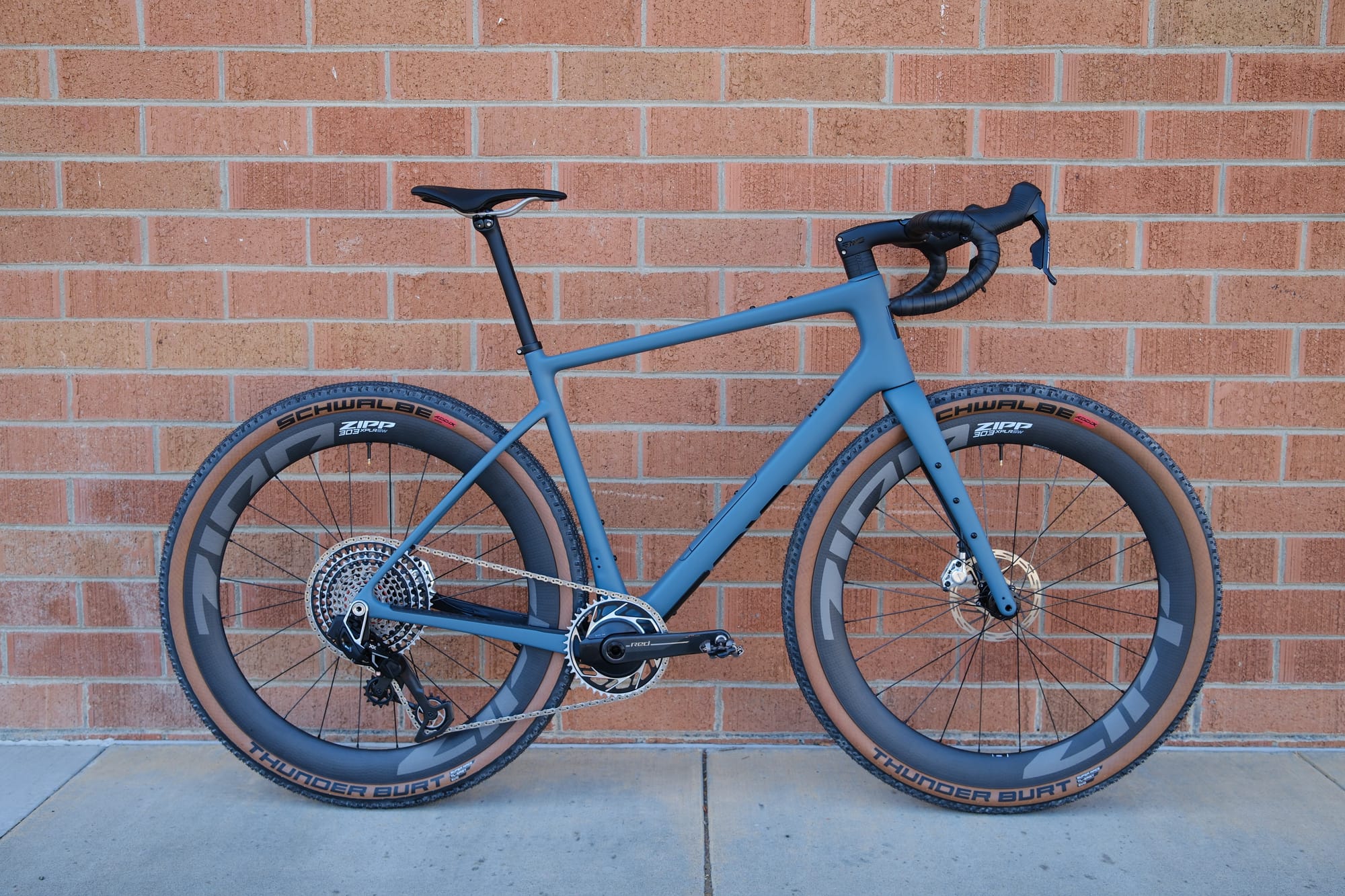
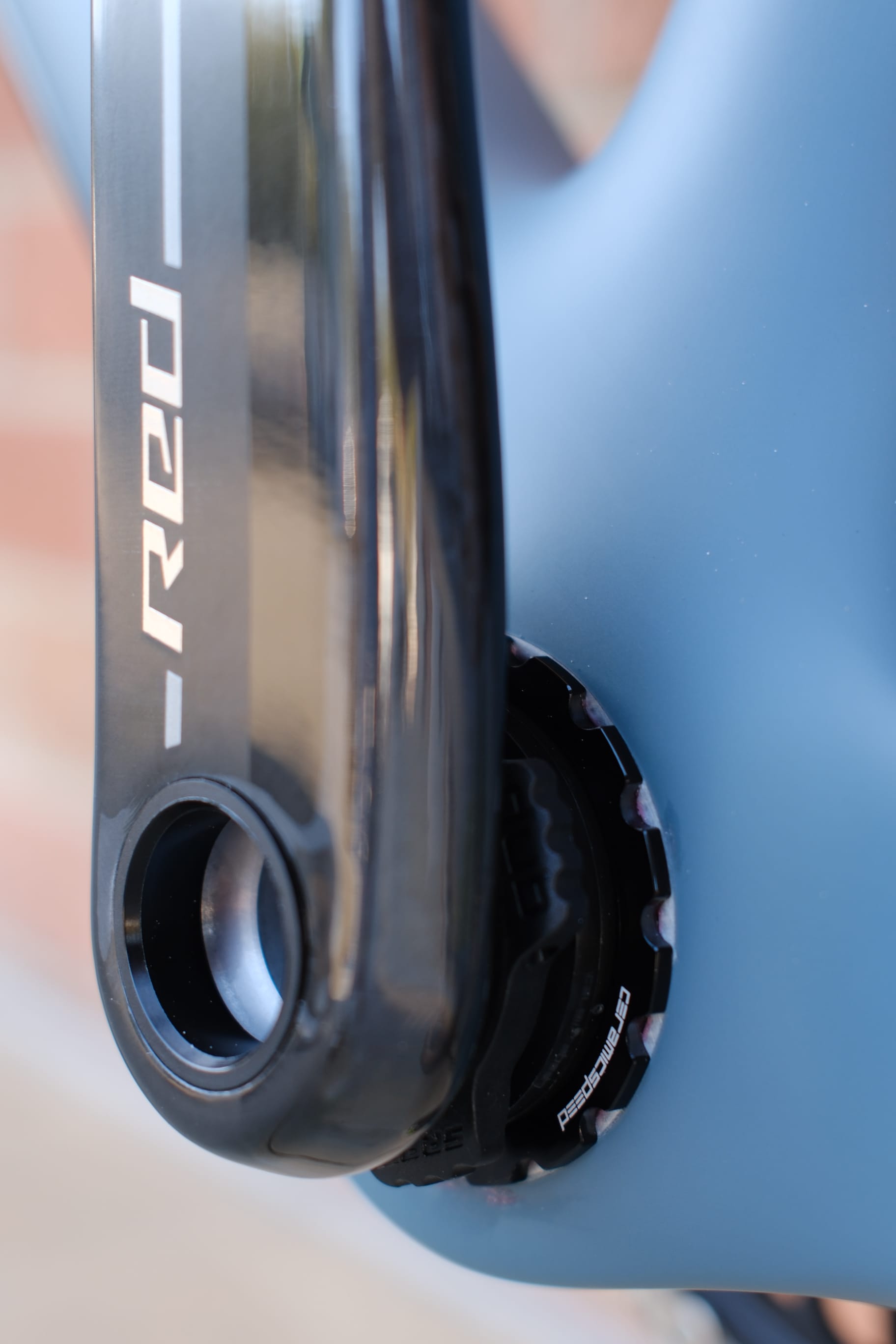
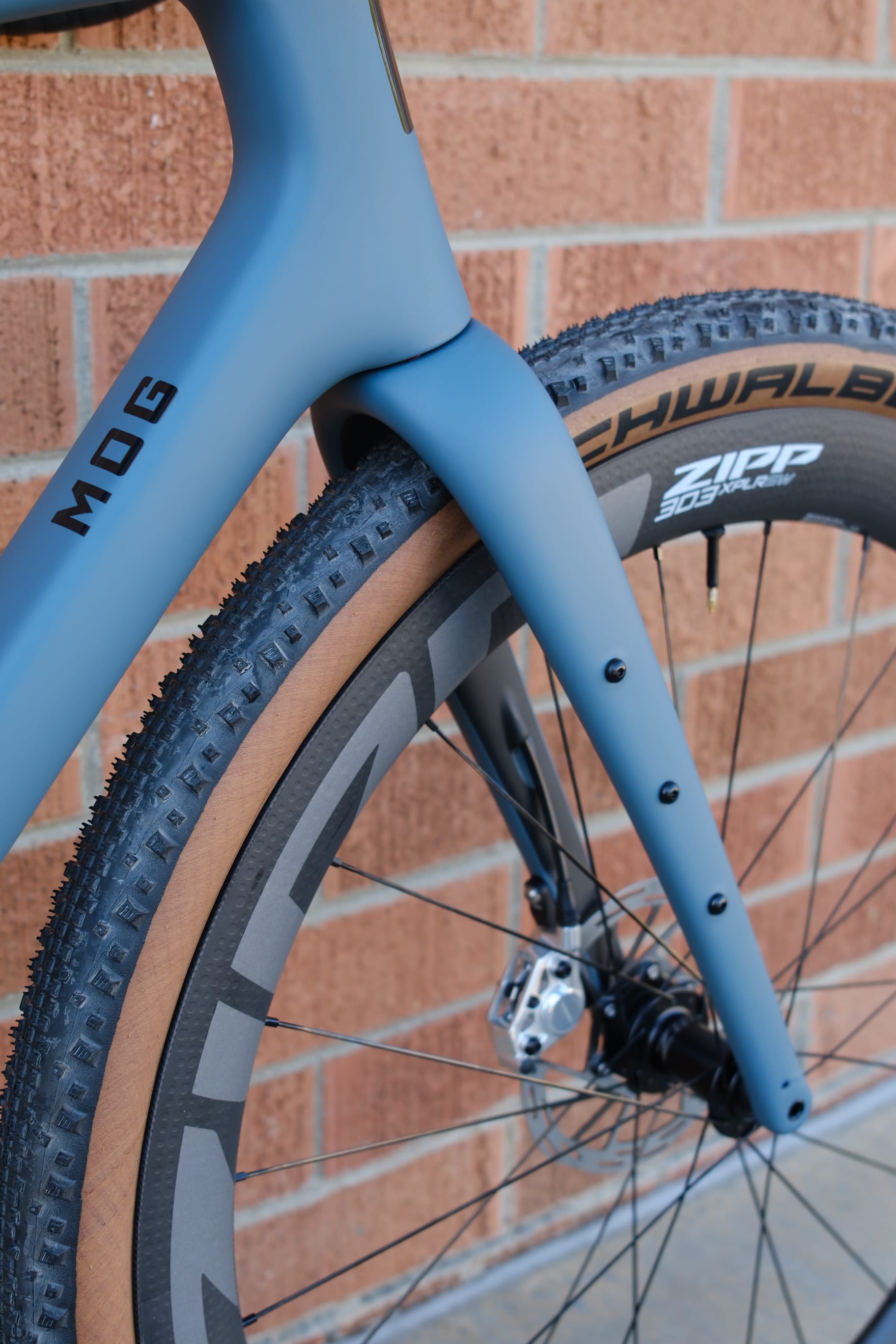
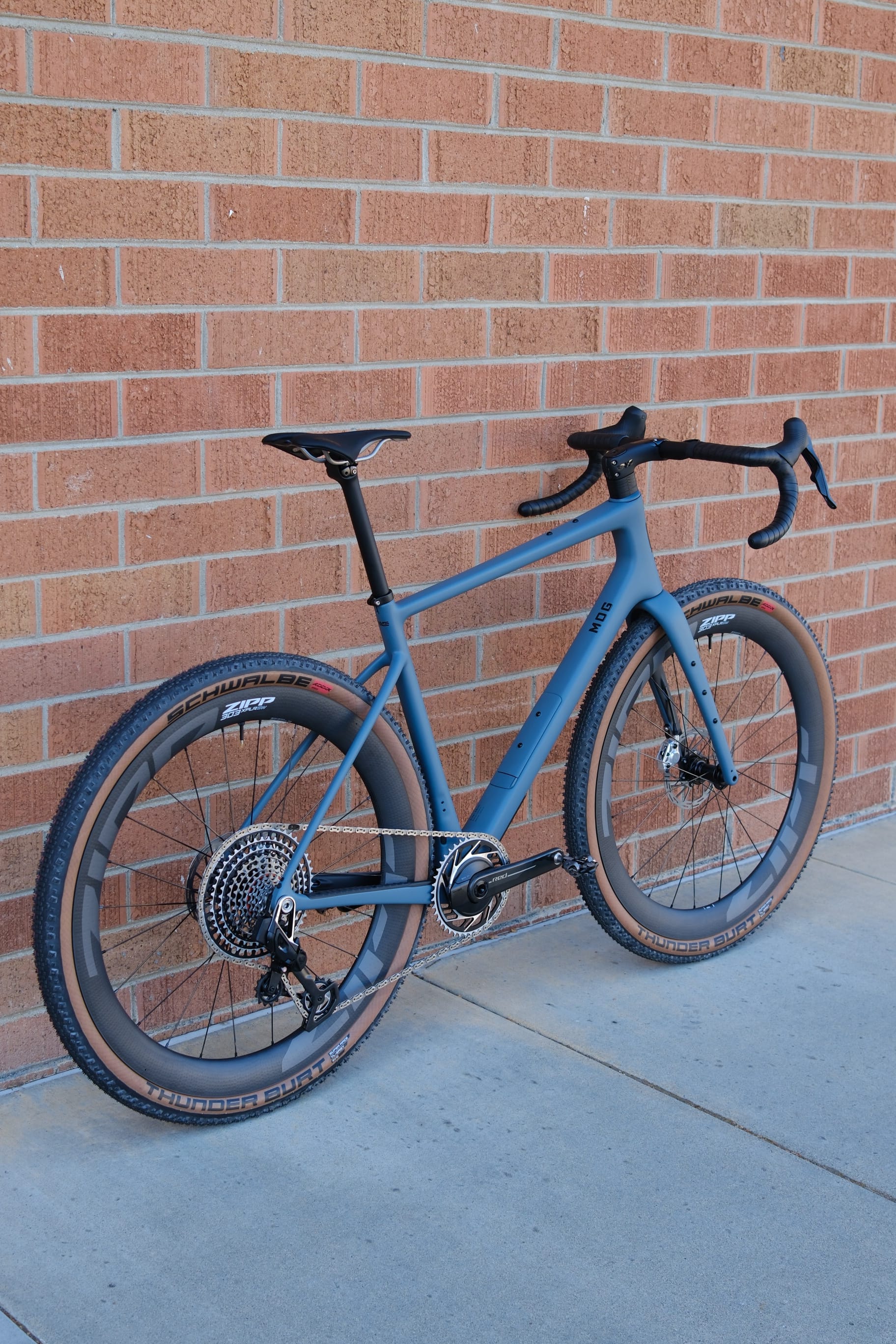
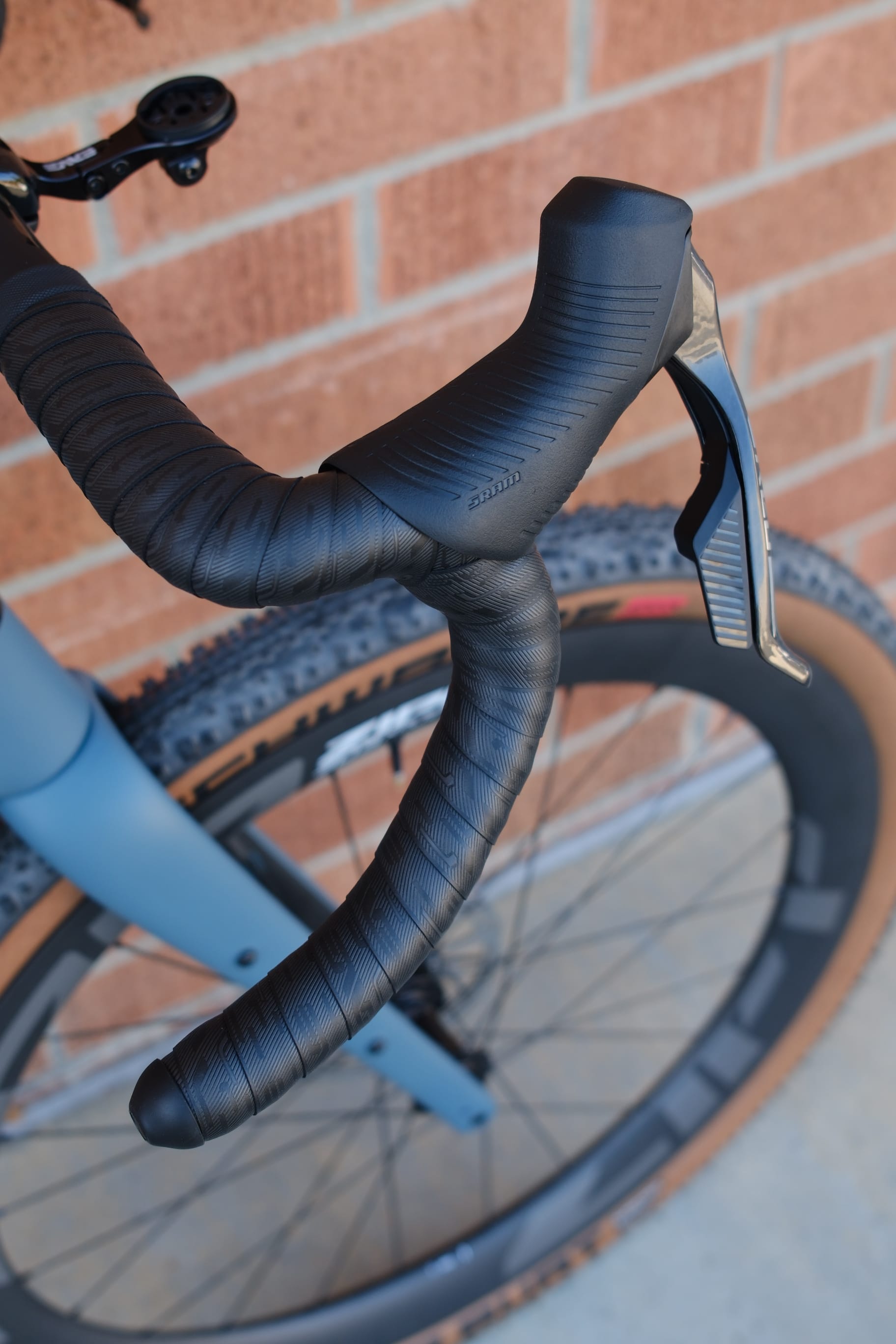
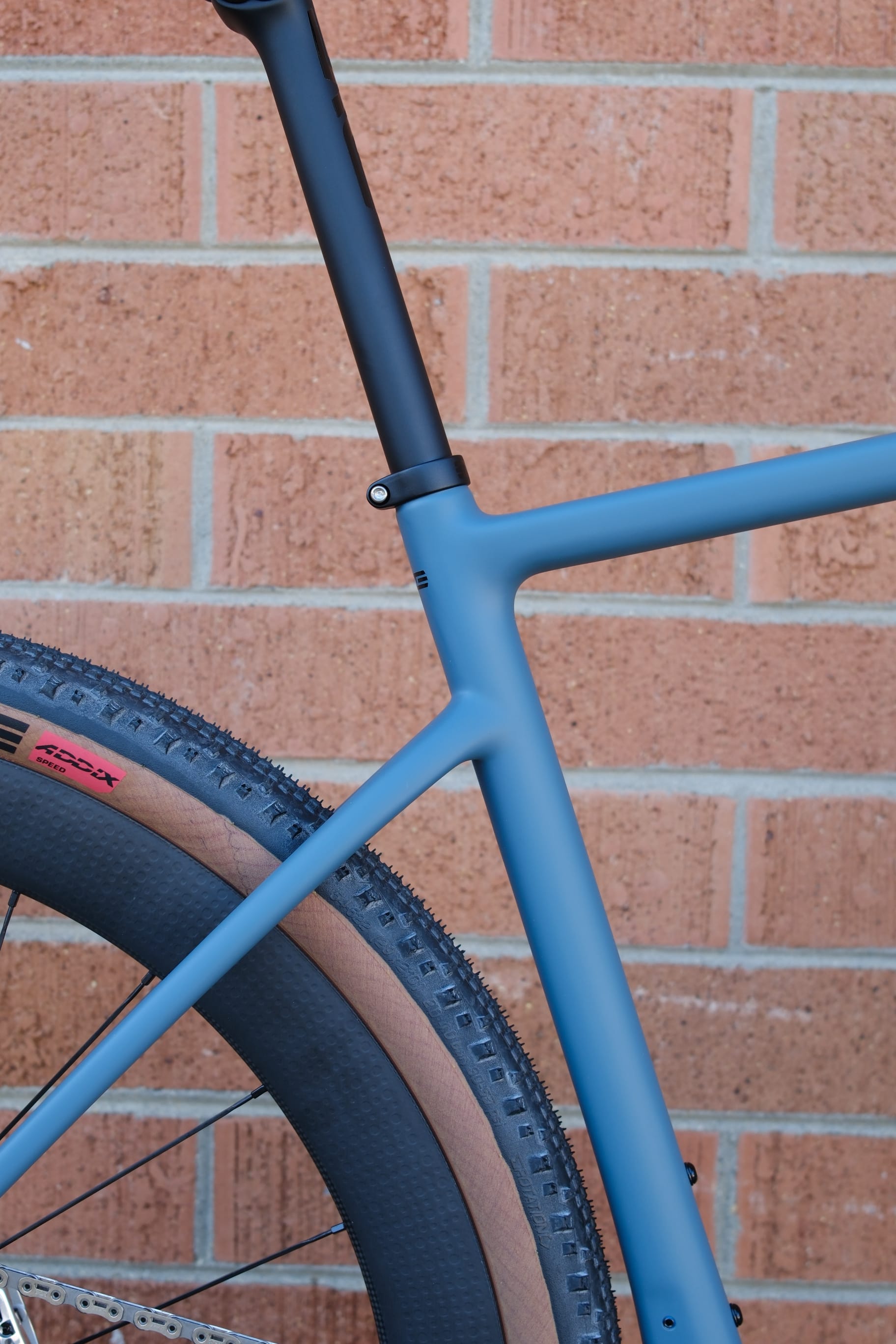
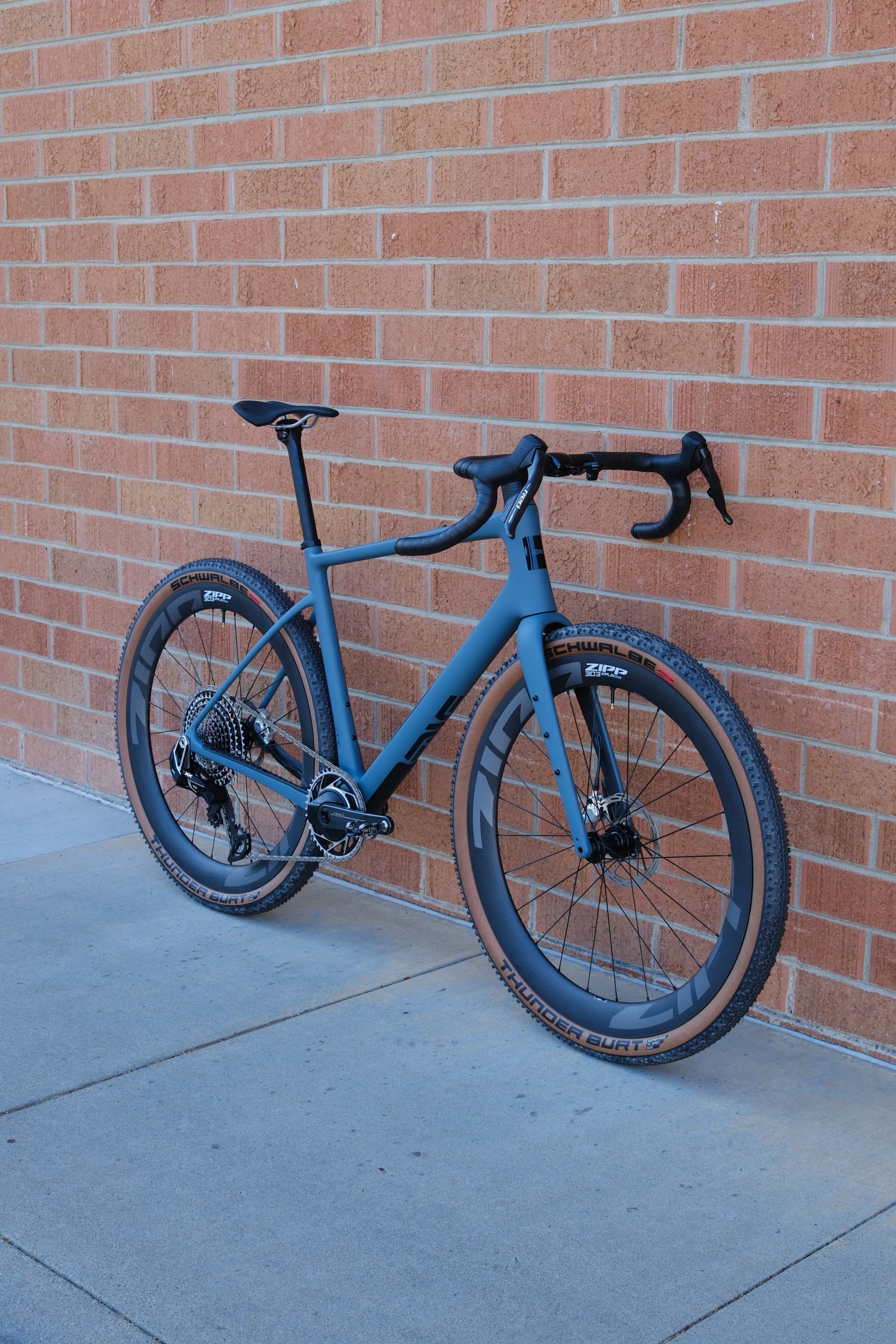
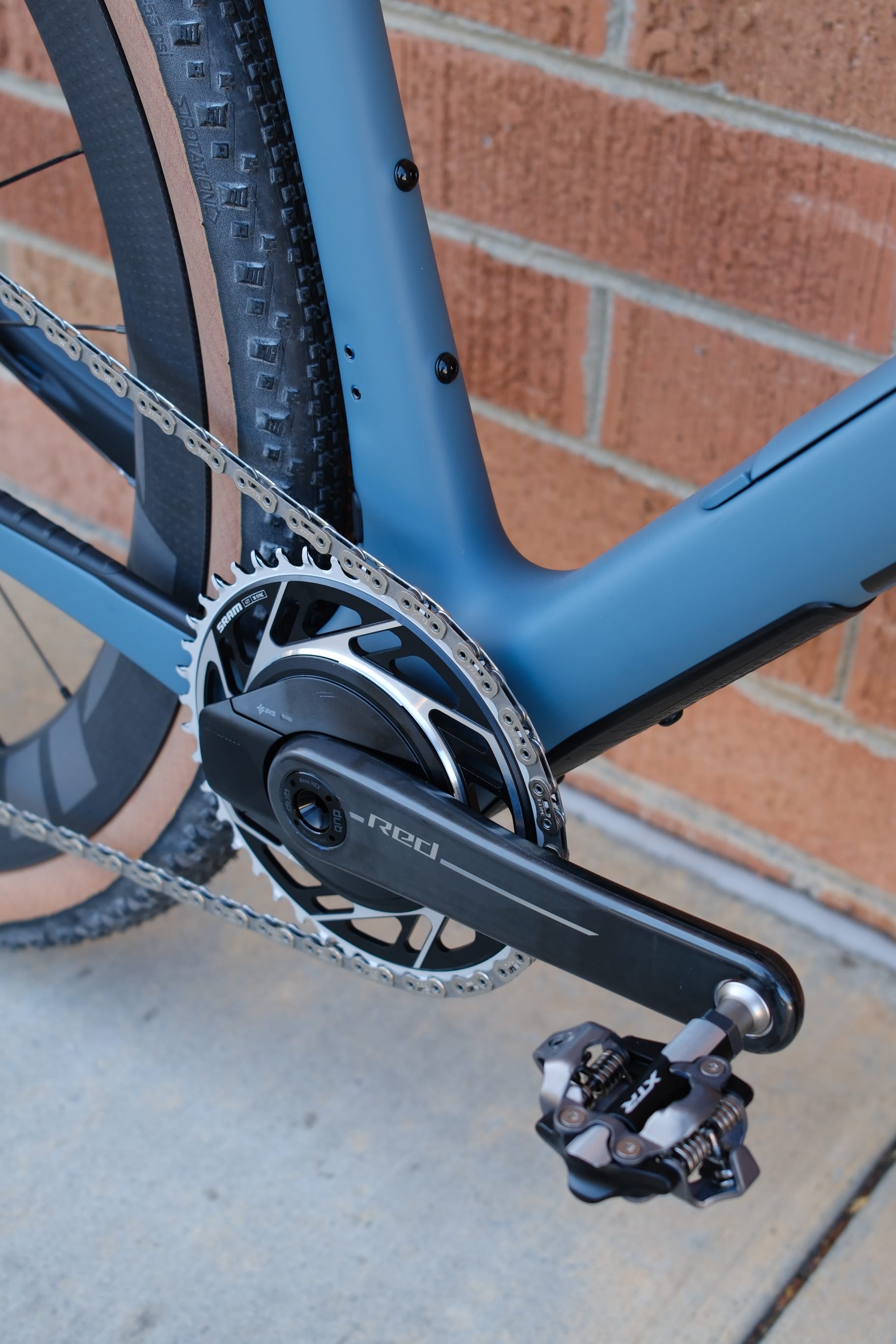
Bike Fit / Position
Once you get to a certain age and want to ride bikes a lot, a bike fit is incredibly important. It’s a great idea at any time, but once you get to “let me stretch first” age, it’s absolutely essential. Way more than just saddle height, small details in bike fit can go a long long way to improve not only comfort on the bike, but to optimize power too.
Like a good endurance oriented road bike, the MOG has a tall-ish stack height, which works really well for me. I’ve gotten a lot more flexible as of late, but for long distance comfort and handling, I really like where the MOG ended up for stack and reach. I ended up with a 100mm stem, so a fairly standard setup, with a few spacers to get it just right. During my bike fit I wanted to find a position that was closest to my endurance road bike position, which was a good bit more stretched out than my previous all-road bike setup. A zero setback seat post with the seat fairly far forward, and I’m good to go. This setup helps me recruit more of my posterior to generate power, while keeping me in a position I can maintain for hours at a time comfortably.
Wheels & Tires
The most anticipated feature of the MOG for me was the tire clearance. This new world of running fast-rolling mountain bike tires on gravel bikes sounded fantastic to me, but I couldn’t find anyone but overpaid influencers to get a sense for how they would really feel on the terrain I typically ride (Marin County on the daily, and NorCal+ region for gravel races.
My setup: The Zipp 303 XPLR SW wheels are the newest aero carbon wheels, with a mind-boggling 32mm internal rim width, with a pair of Schwalbe Thunder Burt Super Race 29 x 2.1” (54mm) tires.
In short, this setup is absolutely amazing.
The first and continued sensation that I have riding these wheels and tires is that of floating. I’ve never experienced that sensation on a bike before. I run 35mm tubeless tires on my road bike, and that is a really comfy setup, but I am still highly aware of cracks on the rough roads of West Marin. An XC mountain bike has the benefit of suspension, which is absolutely more plush than any gravel setup, but not only do you pay for it in bike weight, it also adds a slight sluggishness when compared to a rigid gravel bike. All things being equal, on “gravel” terrain, the fastest bike will be a gravel bike, and the fastest gravel bike with have the fattest fast-rolling tires. (When choosing tires I trust the data at Bicycle Rolling Resistance, and the vast personal experience of the team at Marin Service Course, where all my bikes are built and maintained.)
Beyond the euphoric feeling of floating on air, I had a few other concerns and curiosities of this setup that were quickly absolved:
What does it feel like to climb roads on this setup?
This was the most surprising thing — they feel great. I rode up BoFax to Ridgecrest on Mt. Tam on my second ride and kept up with some quick roadies on the way, while setting a PR. This MOG (without tools) weighs just 18#, so the whole package is light and fast. It is not as fast as a road bike, but it’s not much slower. And you can have a whole lot more adventure on this thing.
How does it handle on twisty fast road descents?
I had a genuine concern about these larger volume tires feeling really soft and sketchy on steep and twisty road descents. I love to ride in the Marin Headlands, and I often ride the road to the top of Hawk Hill to get there. That fast steep (19%) twisty descent down toward Cronkite was heavy on my mind as I considered this bulbous setup. I’m happy to report that this baby rips. It’s less immediate than a road bike carving turns, but much more confident than an XC mountain bike. I felt confident leaning into tight turns on a recent ride at 45mph so any concerns about cornering faded away.
How does the bike feel on rough gravel terrain?
On rough gravel and trails I had a similar floating sensation that has a really noticeable benefit — being more comfortable on rough terrain means you feel far less fatigued. Have you ever read about why you get physically tired driving long distances, just sitting there? It’s because your body is constantly adjusting to subtle bumps and changes in the car’s orientation. Gravel riding is like that — you’re always making micro-adjustments and that adds up to a lot of fatigue. With this setup, not only can I be a bit more carefree about line choice, I also just feel way less beat up after hours on this bike compared to a gravel bike with narrower firmer tires.
How does this setup perform on mild gravel at full speed?
At full speed, this is where the wheels really shine. The tires soak up small bumps such that you feel like you’re on a road bike. You’re in the drops, hammering away, and every bit you give, you get right back. You’re not skipping and bouncing around. You’re not squinting to find the smoothest possible line between pebbles. You are absolutely flying, full gas, because you can. You finally can.
Other tidbits
I chose the ENVE Gravel bars because I really love that flair in the drops. I feel confident and comfortable in that position for a good long while. Having aero-style flat tops would be nicer for the tops, but the SRAM Red hoods are so insanely comfortable that I barely notice. Oh and the Red XPLR brakes are insanely good. I have Shimano GRX 1x11 on my previous all-road bike, and while I can ride rough descents on the hoods and break ok — I needed the strength of a middle finger to actuate a powerful breaking situation. With the Red XPLR brakes, you can do it all with just your index finger. The brakes are strong, consistent, with lots of control, all while being super easy to pull.
The cargo bin! Downtube storage! How could I forget? I carry a well stocked saddle bag on every bike I own, because once an Eagle Scout, always a well prepared cyclist(?) — anyway, the downtube storage on the MOG is really fantastic and fits everything I typically carry. They include two neoprene bags with loops to easily get them in and out. The only thing I needed to change from my normal setup is to go with a narrower multi-tool. I really like the Crankbrothers M-19 multi-tool, but it’s just a bit too wide to fit easily into the downtube without a bit of force. It fits, but I downsized to a Lezyne multi-tool that was 10mm narrower or so.
I hope this was helpful for folks looking to upgrade to this new format of fast fat-tire gravel race bikes.
Let it rip!
